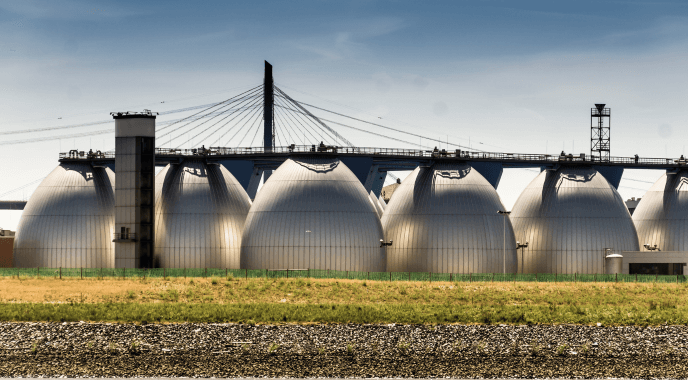Mass spectrometry is used to research the thermal hydrolysis of waste materials to gain a deeper understanding of how changing parameters affect the outcomes of the process. Mass spectrometry, especially an instrument manufactured to analyze dissolved species, is ideal for waste materials as contaminants can be identified and measured. This blog post will look at the importance of thermal hydrolysis and how mass spectrometry can be used to enhance it.
What is Thermal Hydrolysis?
Thermal hydrolysis is a process used in treating waste materials such as industrial waste, solid waste and sewage sludge. It is an innovative process technology that uses heat and pressure to make waste biodegradable, along with other environmental and financial benefits.
Waste is made more biodegradable by the thermal hydrolysis process (THP) as waste material is heated to 150 and 175oC, and then adding pressure quickly. This process breaks down the cellular tissues in the waste material, which increases biodegradability and destroys any infectious cells.

Why do we Research Thermal Hydrolysis of Waste?
Researching the process of thermal hydrolysis has several advantages, including how it works at different temperatures and what pre-treatment options are available to help to enhance the process.
Research has been conducted at temperatures between 60 and 275oC for time periods of 10 to 180 minutes to identify the most suitable conditions and other outcomes. THP is most optimal at a temperature range of 160 to 170oC1.
The benefits of thermal hydrolysis processing are plentiful and span environmental, financial and individual businesses. Because THP increases the biodegradability of waste materials, the process speeds up digesting and heightens biogas production by up to 50%.
Other benefits include2:
- Easy to operate
- Excess biogas can be used sustainably
- Lower odor levels of waste material
- Reduced carbon footprint
- Reduced costs
Why use Mass Spectrometry to Research Thermal Hydrolysis of Waste?
Mass spectrometry is used to analyze and gain a further understanding of the thermal hydrolysis processes used to treat waste materials. When pre-treatment is carried out on waste material, membrane inlet mass spectrometry (MIMS) can monitor any changes. For example, one study observed changes in oxygen consumption and carbon dioxide production throughout the thermal pre-treatment processes in several substrates. MIMS was also used to observe how acetic acid was produced in oxidative and inert atmospheres3.
Mass Spectrometry with Hiden Analytical
Hiden Analytical design and manufacture a range of spectrometers for monitoring specialist processes and research applications. To support our clients and their applications, we focus on utilizing cutting-edge technologies to design products of high standards. We manufacture a membrane inlet mass spectrometer, an ultra-precise, versatile instrument suited to analyze dissolved species.
HPR-40 DSA
The HPR-40 DSA is commonly used in environmental monitoring and gas separation studies. It is equipped with direct and flow-through probes, which can be used in a wide range of applications involving sludge and groundwater studies.
Get in touch with us today for more information on how mass spectrometry can enhance your thermal hydrolysis processes and waste management.
